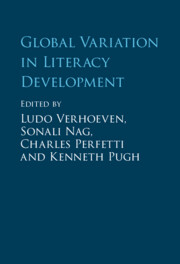174 results
8 - Sex Education in the Modern World
-
-
- Book:
- The Cambridge World History of Sexualities
- Published online:
- 26 April 2024
- Print publication:
- 16 May 2024, pp 159-182
-
- Chapter
- Export citation
Introduction
-
-
- Book:
- The Cambridge History of Latin American Law in Global Perspective
- Published online:
- 15 January 2024
- Print publication:
- 08 February 2024, pp 1-17
-
- Chapter
-
- You have access
- Open access
- HTML
- Export citation

The Cambridge History of Latin American Law in Global Perspective
-
- Published online:
- 15 January 2024
- Print publication:
- 08 February 2024
-
- Book
-
- You have access
- Open access
- Export citation
Introduction
-
- Book:
- Shakespeare's Tercentenary
- Published online:
- 13 January 2024
- Print publication:
- 21 December 2023, pp 1-21
-
- Chapter
- Export citation
16 - International Development and Public Health
- from Part 2 - Contexts for Public Health Practice
-
-
- Book:
- Essential Public Health
- Published online:
- 01 December 2023
- Print publication:
- 14 December 2023, pp 303-322
-
- Chapter
- Export citation

The Chertsey Tiles, the Crusades, and Global Textile Motifs
-
- Published online:
- 07 December 2023
- Print publication:
- 21 December 2023
-
- Element
- Export citation
11 - Writing Systems and Global Literacy Development
- from Part II - Neurobiological and Ecological Markers
-
-
- Book:
- Global Variation in Literacy Development
- Published online:
- 23 November 2023
- Print publication:
- 07 December 2023, pp 241-264
-
- Chapter
- Export citation
1 - Introduction
-
-
- Book:
- Global Variation in Literacy Development
- Published online:
- 23 November 2023
- Print publication:
- 07 December 2023, pp 1-30
-
- Chapter
- Export citation
20 - Global Literacy
- from Part II - Neurobiological and Ecological Markers
-
-
- Book:
- Global Variation in Literacy Development
- Published online:
- 23 November 2023
- Print publication:
- 07 December 2023, pp 446-468
-
- Chapter
- Export citation

Writing the History of Global Slavery
-
- Published online:
- 27 November 2023
- Print publication:
- 07 December 2023
-
- Element
-
- You have access
- Open access
- HTML
- Export citation
Chapter 6 - Benford Agreement Analysis of US and Global COVID-19 New Cases Data
-
- Book:
- Applying Benford's Law for Assessing the Validity of Social Science Data
- Published online:
- 09 November 2023
- Print publication:
- 23 November 2023, pp 131-168
-
- Chapter
- Export citation
7 - Machine Learning for Big Data
- from Part III - Machine Learning for Big Data
-
- Book:
- Large-Scale Data Analytics with Python and Spark
- Published online:
- 15 December 2023
- Print publication:
- 23 November 2023, pp 212-253
-
- Chapter
- Export citation

Global Variation in Literacy Development
-
- Published online:
- 23 November 2023
- Print publication:
- 07 December 2023
Chapter 18 - Decolonizing the Medieval Literary Curriculum
- from Part IV - Canon Revisions
-
-
- Book:
- Decolonizing the English Literary Curriculum
- Published online:
- 02 November 2023
- Print publication:
- 09 November 2023, pp 349-366
-
- Chapter
-
- You have access
- Open access
- HTML
- Export citation
12 - Situating Latinx Immigrant Romantic Relationships in the Context of Illegality
-
-
- Book:
- The Sociocultural Context of Romantic Relationships
- Published online:
- 19 October 2023
- Print publication:
- 02 November 2023, pp 226-246
-
- Chapter
- Export citation
13 - Romantic Relationships during a Global Pandemic
-
-
- Book:
- The Sociocultural Context of Romantic Relationships
- Published online:
- 19 October 2023
- Print publication:
- 02 November 2023, pp 247-272
-
- Chapter
- Export citation
6 - From the International to the Global and Beyond?
-
- Book:
- Becoming International
- Published online:
- 12 October 2023
- Print publication:
- 26 October 2023, pp 218-238
-
- Chapter
- Export citation

Becoming International
-
- Published online:
- 12 October 2023
- Print publication:
- 26 October 2023
6 - Negotiations
- from Part II - Navigating Sites
-
-
- Book:
- Conducting Research on Global Environmental Agreement-Making
- Published online:
- 07 August 2023
- Print publication:
- 10 August 2023, pp 93-120
-
- Chapter
- Export citation
Bereavement issues and prolonged grief disorder: A global perspective
-
- Journal:
- Cambridge Prisms: Global Mental Health / Volume 10 / 2023
- Published online by Cambridge University Press:
- 20 June 2023, e32
-
- Article
-
- You have access
- Open access
- HTML
- Export citation



